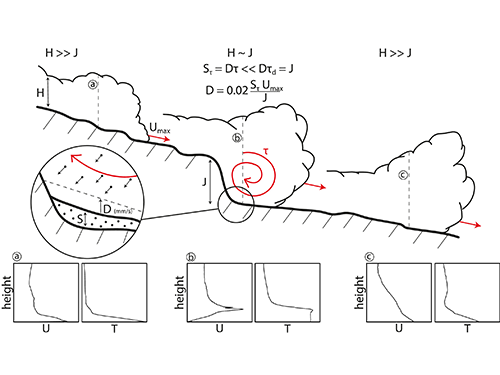Thermal transient PDC behavior induced by topographic drops: A test case at Mt. St. Helens, USA

Trolese M., M. Cerminara, G. Giordano, B.D. Brand, N. Pollock, F. Cifelli, M. Mattei, 2024.
Earth and Planetary Science Letters, 627, https://doi.org/10.1016/j.epsl.2023.118441
Abstract
Topography plays an important yet uncertain role in modulating the temporal and spatial evolution of the internal structure of pyroclastic density currents (PDCs). Understanding such changes is critical to characterize PDC transport regimes and their hazard. Here we combine paleomagnetic data from PDC deposits of the 18 May 1980 Mt. St. Helens eruption with numerical outcomes to capture spatio-temporal temperature variations induced by topography. We show that emplacement temperatures along the northwest flank of the volcano are ≃100°C colder than those recorded along the northeast flank in response to proximal topographic drops. We further report that such vertical drops lead to an initial transient regime where the PDC internal temperature, velocity, and concentration stratification is altered for periods of time that are proportional to the ratio between the drop height and the square root of the current thickness. The topographic control on PDC dynamics is attenuated moving away from the drops or when a stationary phase is attained. Collectively, our results highlight that topographic regions promoting the flow separation/reattachment process are associated with vigorous entrainment of ambient air in the lower portion of PDCs. Low temperature variability is observed in the absence of such topographic irregularities. Based on our findings, we propose a local sedimentation rate of ≃150 ± 100 mm s−1 for PDC deposits in a proximal reattachment region. This investigation demonstrates the importance of transient processes in PDC dynamics, introducing a new methodology to measure sedimentation rates, and highlighting that flow-topography feedbacks should be considered to assess hazards.



Devi effettuare l'accesso per postare un commento.